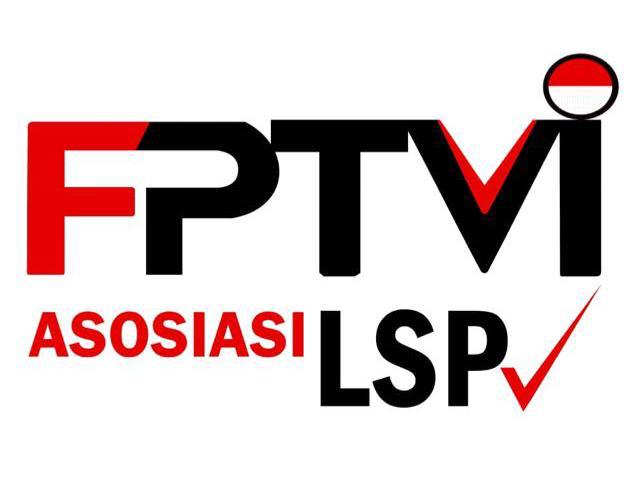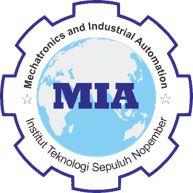Effect of Variation of Adsorbent and pH Doses on Boron Adsorption Using DMAPAA-co-DMAPAAQ Hydrogel
Abstract
Boron is very dangerous for living things. The boron concentration allowed for drinking water is less than 1 mg/L. If not standard, boron causes nausea, lethargy, diarrhea, vomiting, dermatitis, and a risk of miscarriage in pregnant women. Thus, this research investigated the effect of variations in adsorbent dosage and pH on boron adsorption using the DMAPAA-co-DMAPAAQ hydrogel. The research began with the hydrogel synthesis process, which continued with the batch-mode sorption study. Based on research results, the higher the adsorbent dosage, the more boron is adsorbed. The highest removal percentage with an adsorbent amount of 0.5 g/L was 19.89% for pH 3, and for an adsorbent dosage of 2 g/L was 19.52% for pH 9. The highest percent removal was at pH 11. The DMAPAA-co-DMAPAAQ hydrogel adsorbent is shown to be environmentally friendly compared to commercial resins because the commercial resins are not biodegradable, making them difficult to recycle, causing more damage to the environment.
Keywords
Full Text:
PDFReferences
Misnawati, R. Boer, and F. Ramdhani, Spatiotemporal Variation of Drought Characteristics Based on Standardized Precipitation Index in Central Java over 1990-2010, vol. 893, no. 1. 2021.
B. Tomaszewska, “Use of low-enthalpy and waste geothermal energy sources to solve arsenic problems in freshwater production in selected regions of Latin America using a process membrane distillation – Research into model solutions,” Sci. Total Environ., vol. 714, 2020.
J. Y. Lin, N. N. N. Mahasti, and Y. H. Huang, “Recent advances in adsorption and coagulation for boron removal from wastewater: A comprehensive review,” J. Hazard. Mater., vol. 407, no. October 2020, p. 124401, 2021.
A. E. Yilmaz, R. Boncukcuoǧlu, M. M. Kocakerim, M. T. Yilmaz, and C. Paluluoǧlu, “Boron removal from geothermal waters by electrocoagulation,” J. Hazard. Mater., vol. 153, no. 1–2, pp. 146–151, 2008.
N. Hilal, G. J. Kim, and C. Somerfield, “Boron removal from saline water: A comprehensive review,” Desalination, vol. 273, no. 1, pp. 23–35, 2011.
F. H. Nielsen, “The Nutritional Importance and Pharmacological Potential of Boron for Higher Animals and Human,” Boron Plant Anim. Nutr., pp. 37–49, 2002.
M. Bryjak, J. Wolska, and N. Kabay, “Removal of boron from seawater by adsorption-membrane hybrid process: implementation and challenges,” Desalination, vol. 223, no. 1–3, pp. 57–62, 2008.
E. Council, “98/83/EC directive on the quality of water intended for human consumption,” Off. J. Eur. Communities, vol. 330, no. November 1998, pp. 1–36, 1998.
N. Anesthesia, Guidelines for. 2010.
S. Bhagyaraj, M. A. Al-Ghouti, P. Kasak, and I. Krupa, “An updated review on boron removal from water through adsorption processes,” Emergent Mater., vol. 4, no. 5, pp. 1167–1186, 2021.
W. M. Haynes, CRC Handbook of Chemistry and Physics. 1942.
H. Hyung and J. H. Kim, “A mechanistic study on boron rejection by sea water reverse osmosis membranes,” J. Memb. Sci., vol. 286, no. 1–2, pp. 269–278, 2006.
M. Tagliabue, A. P. Reverberi, and R. Bagatin, “Boron removal from water: Needs, challenges and perspectives,” J. Clean. Prod., vol. 77, pp. 56–64, 2014.
C. Sanfeliu, “Low-cost materials for boron adsorption from water,” J. Mater. Chem., vol. 22, no. 48, pp. 25362–25372, 2012.
S. Nishihama, Y. Sumiyoshi, T. Ookubo, and K. Yoshizuka, “Adsorption of boron using glucamine-based chelate adsorbents,” Desalination, vol. 310, pp. 81–86, 2013.
Z. Guan, J. Lv, P. Bai, and X. Guo, “Boron removal from aqueous solutions by adsorption - A review,” Desalination, vol. 383, pp. 29–37, 2016.
M. H. Isa, E. H. Ezechi, Z. Ahmed, S. F. Magram, and S. R. M. Kutty, “Boron removal by electrocoagulation and recovery,” Water Res., vol. 51, no. 0, pp. 113–123, 2014.
M. Dolati, A. A. Aghapour, H. Khorsandi, and S. Karimzade, “Boron removal from aqueous solutions by electrocoagulation at low concentrations,” J. Environ. Chem. Eng., vol. 5, no. 5, pp. 5150–5156, 2017.
M. Chen, O. Dollar, K. Shafer-Peltier, S. Randtke, S. Waseem, and E. Peltier, “Boron removal by electrocoagulation: Removal mechanism, adsorption models and factors influencing removal,” Water Res., vol. 170, p. 115362, 2020.
L. Luo, Z. Zhou, T. S. Chung, M. Weber, C. Staudt, and C. Maletzko, “Experiments and modeling of boric acid permeation through double-skinned forward osmosis membranes,” Environ. Sci. Technol., vol. 50, no. 14, pp. 7696–7705, 2016.
J. G. Neo, S. Japip, L. Luo, T. S. Chung, M. Weber, and C. Maletzko, “Hydroxyl-terminated poly(ethyleneimine) polymer enhanced ultrafiltration for boron removal,” Sep. Purif. Technol., vol. 222, no. January, pp. 214–220, 2019.
A. A. Halim, N. A. Roslan, N. S. Yaacub, and M. T. Latif, “Boron removal from aqueous solution using curcumin-impregnated activated carbon,” Sains Malaysiana, vol. 42, no. 9, pp. 1293–1300, 2013.
J. Kluczka, W. Pudło, and K. Krukiewicz, “Boron adsorption removal by commercial and modified activated carbons,” Chem. Eng. Res. Des., vol. 147, pp. 30–42, 2019.
I. Polowczyk, J. Ulatowska, T. Koźlecki, A. Bastrzyk, and W. Sawiński, “Studies on removal of boron from aqueous solution by fly ash agglomerates,” Desalination, vol. 310, pp. 93–101, 2013.
J. Kluczka, J. Trojanowska, and M. Zołotajkin, “Utilization of fly ash zeolite for boron removal from aqueous solution,” Desalin. Water Treat., vol. 54, no. 7, pp. 1839–1849, 2015.
J. Ulatowska, I. Polowczyk, A. Bastrzyk, T. Koźlecki, and W. Sawiński, “Fly ash as a sorbent for boron removal from aqueous solutions: Equilibrium and thermodynamic studies,” Sep. Sci. Technol., vol. 55, no. 12, pp. 2149–2157, 2020.
M. E. L. Fleet, “Preliminary investigations into the sorption of boron by clay minerals,” Clay Miner., vol. 6, no. 1, pp. 3–16, 1965.
N. Biçak and B. F. Şenkal, “Sorbitol-modified poly(N-glycidyl styrene sulfonamide) for removal of boron,” J. Appl. Polym. Sci., vol. 68, no. 13, pp. 2113–2119, 1998.
C. Bai, M. Guo, Z. Liu, Z. Wu, and Q. Li, “A novel method for removal of boron from aqueous solution using sodium dodecyl benzene sulfonate and D-mannitol as the collector,” Desalination, vol. 431, no. August 2017, pp. 47–55, 2018.
T. M. Ting, M. M. Nasef, and K. Hashim, “Tuning N-methyl-d-glucamine density in a new radiation grafted poly(vinyl benzyl chloride)/nylon-6 fibrous boron-selective adsorbent using the response surface method,” RSC Adv., vol. 5, no. 47, pp. 37869–37880, 2015.
J. Jung “Surface-initiated ATRP of glycidyl methacrylate in the presence of divinylbenzene on porous polystyrene-based resins for boron adsorption,” Desalination, vol. 473, no. August 2019, p. 114166, 2020.
M. A. Haq, Y. Su, and D. Wang, “Mechanical properties of PNIPAM based hydrogels: A review,” Mater. Sci. Eng. C, vol. 70, pp. 842–855, 2017.
H. C. Kim, X. Shang, J. H. Huang, and B. A. Dempsey, “Treating laundry waste water: Cationic polymers for removal of contaminants and decreased fouling in microfiltration,” J. Memb. Sci., vol. 456, pp. 167–174, 2014.
S. R. Safi, K. Senmoto, T. Gotoh, T. Iizawa, and S. Nakai, “The effect of γ -FeOOH on enhancing arsenic adsorption from groundwater with DMAPAAQ + FeOOH gel composite,” Sci. Rep., no. March, pp. 1–4, 2019.
T. Gotoh, K. Tanaka, T. Arase, and S. Sakohara, “A Novel Thermosensitive Gel Adsorbent for Phosphate Ions,” pp. 81–87, 2010.
F. S. Kot, Boron in the Environment. Elsevier B.V., 2015.
M. Ateia “Cationic polymer for selective removal of GenX and short-chain PFAS from surface waters and wastewaters at ng/L levels,” Water Res., vol. 163, 2019.
C. E. de F. Silva, B. M. V. da Gama, A. H. da S. Gonçalves, J. A. Medeiros, and A. K. de S. Abud, “Basic-dye adsorption in albedo residue: Effect of pH, contact time, temperature, dye concentration, biomass dosage, rotation and ionic strength,” J. King Saud Univ. - Eng. Sci., vol. 32, no. 6, pp. 351–359, 2020.
Y. Song, T. Gotoh, and S. Nakai, “Synthesis of oxidant functionalised cationic polymer hydrogel for enhanced removal of arsenic (III),” Gels, vol. 7, no. 4, 2021.
E. M. Frazar, A. Smith, T. Dziubla, and J. Z. Hilt, “Thermoresponsive Cationic Polymers: PFAS Binding Performance under Variable pH, Temperature and Comonomer Composition,” Gels, vol. 8, no. 10, 2022.
A. Iryani, U. Pakuan, A. H. Mulyati, and U. Pakuan, “Comparison of Coagulan Pac and Alum As a Industrial Waste Water in Pt Nalco Indonesia,” February 2017, 2012.
E. O. Ningrum, “The Adsorption Behaviors of Thermosensitive poly ( DMAAPS ) Grafted Onto EVA Porous Support The Adsorption Behaviors of Thermosensitive poly ( DMAAPS ) Grafted Onto EVA Porous Support,” in 1st International Symposium of Indonesian Chemical Engineering (ISIChem), 2018, pp. 1–7.
H. Al Kakoun, “Sustainable Biodegradable Inks,” pp. 0–9, 2022.
DOI: http://dx.doi.org/10.12962%2Fj23378557.v10i1.a19154
Refbacks
- There are currently no refbacks.
This work is licensed under a Creative Commons Attribution 4.0 International License. IPTEK The Journal of Engineering published by Pusat Publikasi Ilmiah, Institut Teknologi Sepuluh Nopember.
Please contact us for order or further information at: email: iptek.joe[at]gmail.com Fax/Telp: 031 5992945. Editorial Office Address: Pusat Riset Building 6th floor, ITS Campus, Sukolilo, Surabaya 60111, Indonesia.








